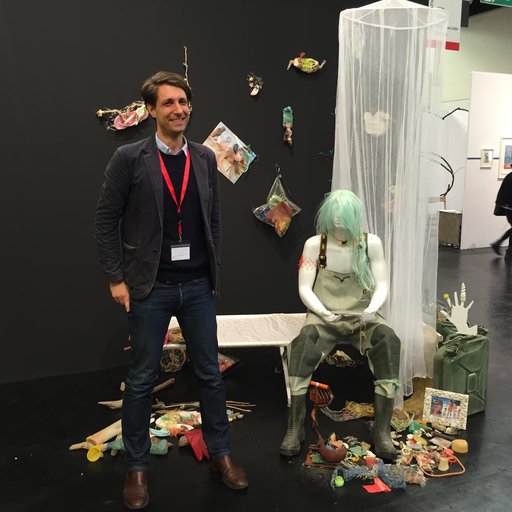Working in New York City during the ‘60s, Paul Thek became famous for his series Technological Reliquaries, also known as “Meat Pieces,” unsavory wax sculptures of meat and human limbs enclosed in Plexiglas display cases. Thek spent the following decade in Europe where his style and artistic output changed drastically. He turned towards collaboration, creating site-specific installations made of ephemeral materials such as newspaper, plants, eggs, unfired clay, sand, flowers, among other everyday or rejected items. Each installation was then entirely taken apart, the individual components either recycled in other works or thrown back to the rubbish pile. In his best known work from this series, The Tomb–Death of a Hippie, Thek made a cast of his own body and enshrined it in a pink pyramid, a mysterious work that simultaneously conjures notions of the divine and the profane. Upon his return to New York City, Thek turned to painting and drawing before dying of an AIDS-related illness in 1988.
In 2010 the Whitney Museum of American Art spotlighted his career in the retrospective Paul Thek: Diver.
THANKS FOR SIGNING UP FOR OUR NEWSLETTER.
THAT EMAIL HAS ALREADY BEEN SUBSCRIBED.
Now, personalize your account so you can discover more art you'll love.
PERSONALIZE YOUR ACCOUNTDISCOVER
a treasure trove of fine art from the world's most renowned artists, galleries, museums and cultural institutions. We offer exclusive works you can't find anywhere else.
LEARN
through exclusive content featuring art news, collecting guides, and interviews with artists, dealers, collectors, curators and influencers.
BUY
authentic artworks from across the globe. Collecting with us means you're helping to sustain creative culture and supporting organizations that are making the world a better place.
CONNECT
with our art advisors for buying advice or to help you find the art that's perfect for you. We have the resources to find works that suit your needs.

INSIDER ACCESS TO THE WORLD'S BEST ART
Artspace offers you authentic, exclusive works from world-renowned artists, galleries, museums and cultural institutions. Collecting with us helps support creative culture while bringing you art news, interviews and access to global art resources.





